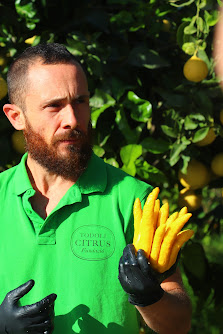I remembered the badges conversation when we were in Altea town centre. "Ah look, there'll be a badge on this car", I said, but there wasn't. I walked down a row of at least 50 parked cars before I got to one with a sticker. I was truly surprised. My car has one and I just presumed that it was in the majority. In fact I recently had a conversation with a Spanish chap who was really sad that the new legislation meant that he was going to have to replace his much loved, nearly 500,000 kilometre, but still going strong, SEAT Cordoba for something newer. Hypothetically, from 1st January 2023, all towns with a population in excess of 50,000 have a low emissions zone (ZBE) in place. That's now a date that has passed. In practice only Madrid, Barcelona, Pontevedra and Zaragoza have complied with their legal obligations. A handful of other towns are nearly there and will implement this year but lots of places, Murcia Region and the Valencian Community for instance, have absolutely nothing planned.
The stickers are the basis for cars and vans entering these low emission zones. Bear in mind that there are lots of exceptions, lots of ifs, buts and maybes. The system gives a 0 sticker to the non polluting cars - electric vehicles and the like. Hybrids and gas propelled cars get an ECO sticker. Petrol engined cars after the beginning of 2006 and diesels built after September 2015 get a C sticker. Petrol cars from 2001 and diesels from 2006 get a B sticker. Older than that and you don't get a sticker. As I said lots of exceptions and lots of technical definitions. Look somewhere official if you need real detail.
There are 149 towns that have over 50,000 people in Spain. If this legislation had actually been implemented on time and you owned a nicely turned out, 2005, 2.7 litre diesel Jag S type you wouldn't be able to drive into them. Locally that would keep you out of Alcoy, Petrer, Orihuela, Torrevieja, San Vicente, Benidorm or even Molina de Segura never mind the obviously larger places like Alicante, Elche or Murcia.
The plans are in the hands of the local town halls so the what, where and how will vary from place to place. In Barcelona for instance the restrictions cover nearly all of the city but in Madrid it's just the very small area inside the M30 ring road. The idea is to use cameras to identify, and later fine, cars that enter the areas they shouldn't. Fines in Madrid and Barcelona are at about 200€ with discounts for early payment. These two cities give a clue to how other places will behave. The 0 cars enter and leave at will and street park if they can find somewhere. The B and C cars can enter but have to use designated car parks and even the ECO cars can only street park for a maximum of 2 hours. Residents currently get the right to enter the restricted areas with any old car but that right will be phased out over time. It's pretty easy to see the thinking behind this. If you're poor, with an old banger then you get the chop first. The better off, with a newer motor, get a reprieve for their combustion engines for a while but, until people abandon fossil fuel, the restrictions will bite harder and harder. 2030 is the first target date for real controls and by 2050 combustion engines will be a thing of the past. Indeed in the EU the plan is that new combustion engine vehicles will not be sold after 2035.
It's probably true too that the idea of private car ownership is already a bit passé. Different ways of getting about urban areas for individuals and rethought schemes of planning and coordinating public and group transport for longer trips are on the way. Unless the sixth extinction event gets here first. Until then it's not difficult to get the stickers. You go to the Post Office with your Permiso de Circulacion for the vehicle in question and your ID for the owner of said vehicle - something like your TIE, DNI or, I suppose for non residents with cars parked here, their passport and NIE.
The impetus for this blog was my surprise at realising that so few cars have the sticker. It is not intended as a guide to the legislation. For good information go to a reputable source, like the DGT website or, for something in English, maybe the N332 Facebook page.



















